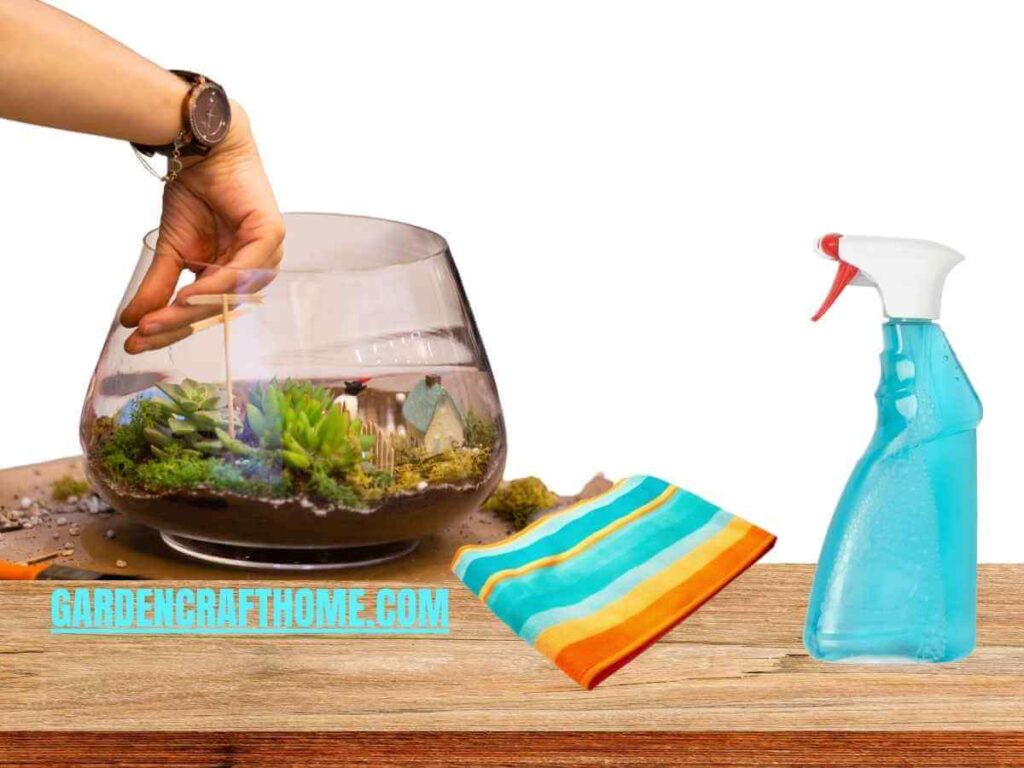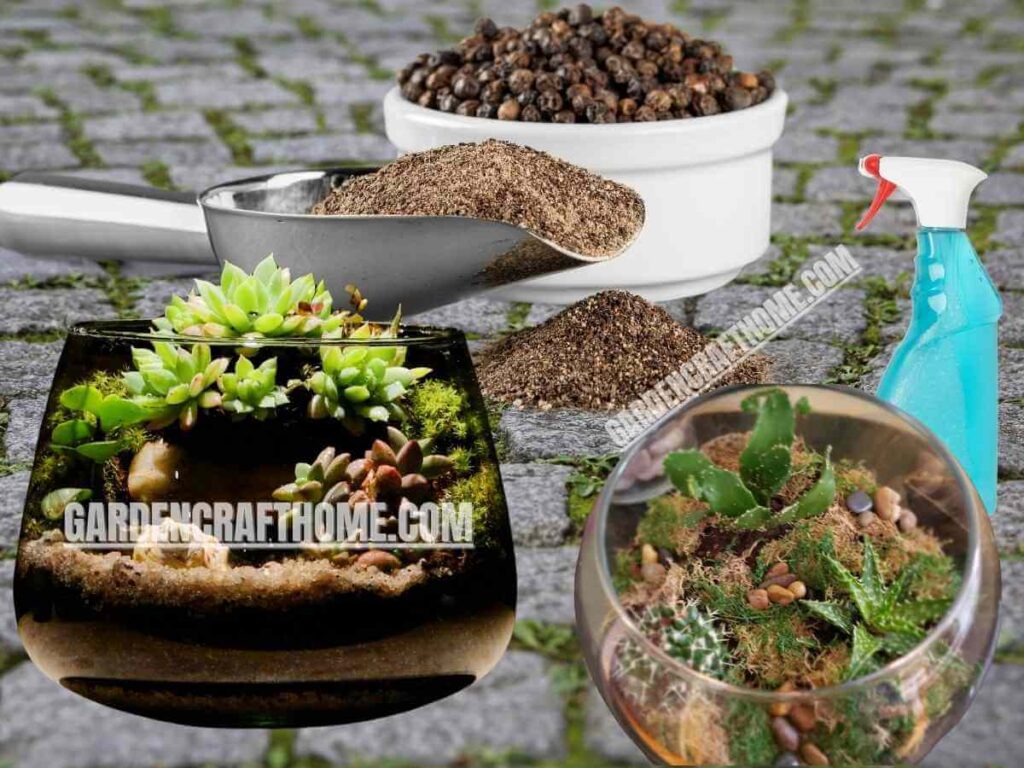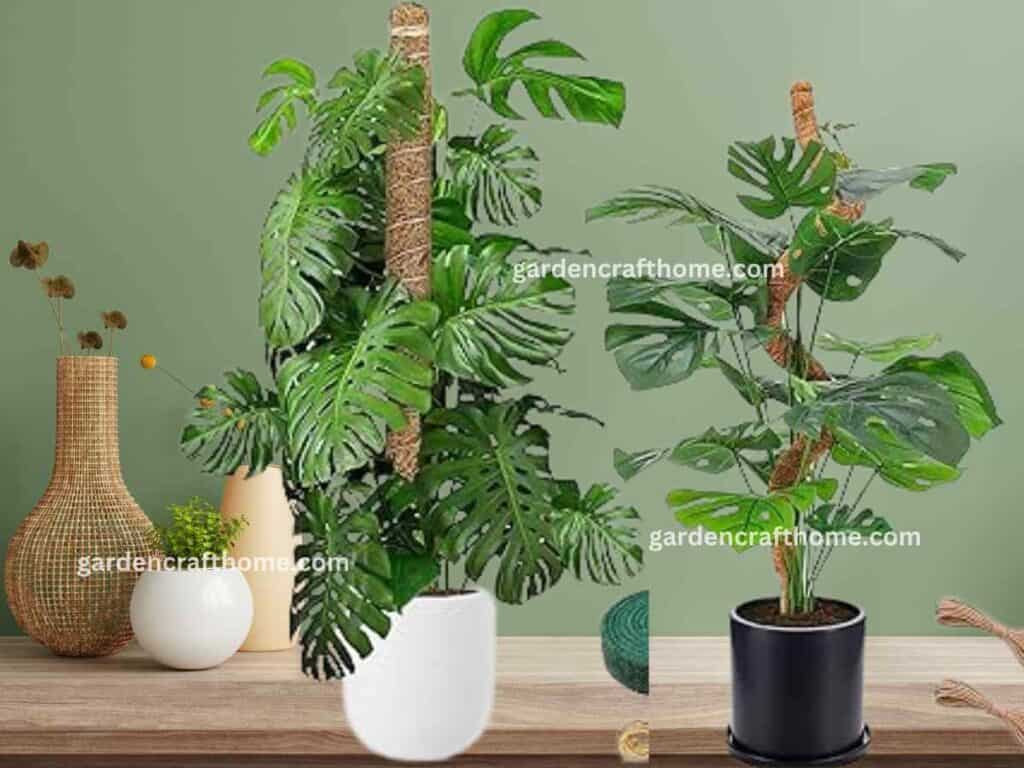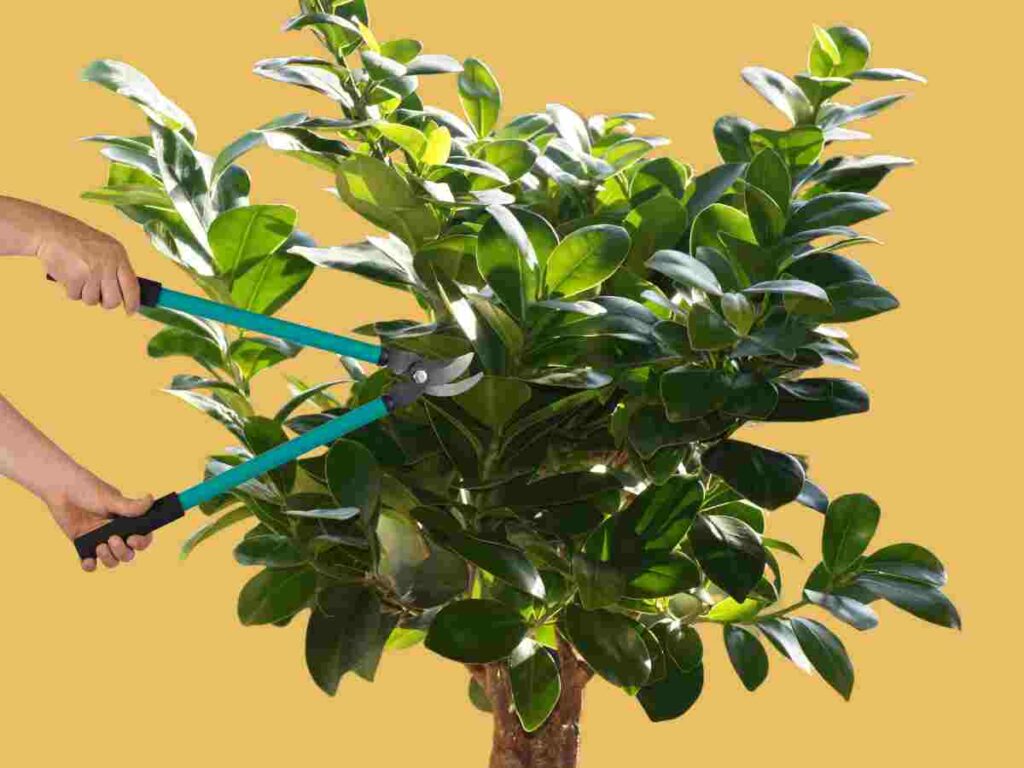Willing to learn How to take care for a terrarium at home after purchase. Maintaining the glasses with good watering, lighting temperature, pruning, and cleaning is very easy.
Today, I want to talk about the six most important factors for taking care of terrariums so that they remain beautiful and vital for as long as possible.
How To Maintain And Care For A Terrarium
How to Care for a Terrarium at Home After Purchase: We are discussing an already-made terrarium.
A premade terrarium is one in which we cannot change the substrate or the plants inside without having to set it up again from scratch.
Compared to most potted plants, the terrarium is an ecosystem that moves slowly.
All the elements useful for terrarium development must be calibrated to the right point. Neither too much nor too little.
For example, fertilizing a terrarium, often not recommended to prevent plants from growing too quickly, can give great satisfaction if done in moderation.
In general, the advice for taking care of a pre-made terrarium is:
- Keep the substrate moist, but do not overwater. READ MORE. [Link]
- Provide light, but not direct sun.
- Remove the lid for about 30 minutes every 2-3 days.
- Keep temperatures between 15 and 27 °C.
- Prune plants regularly.
- Clean the outside of the terrarium from dust.
Be wary of anyone who tells you that a “commercial” terrarium is a closed ecosystem that should never be opened.
As fascinating as the idea is, this is not the case.
With this, I don’t mean that it can’t be done, but to do it, you have to assemble it yourself with a good substrate.
Plants suitable for a closed terrarium with the help of tiny insects that feed on dry leaves and mushrooms that inevitably they create.
Having said this, let’s go into detail about these 6 tips on the care and maintenance of a terrarium.
Lighting
For the plants inside the terrarium to thrive, they must receive a fair amount of natural or artificial light.
The ideal place to place a terrarium is near a bright window but away from direct light.
Alternatively, it can be illuminated with a simple white LED bulb as long as it is kept about a foot away from the container.
The goal is to provide enough light to keep plants healthy, absorb water, and carry out photosynthesis, but not so much that they grow rapidly.
We often see people position their terrariums too far from light sources, resulting in the following result.
Not only do the plants not grow at all, but they don’t even use the water inside the substrate, which always remains wet.
Temperature
The temperature inside the terrarium should always remain between 15 and 27°C, which coincides with that appreciated by most tropical plants.
Maintaining the temperature in this range at home is so easy that it’s often not a factor to worry about.
You only need to pay attention to two circumstances:
- Cold glass: If the glass becomes cold due to freezing drafts, it risks damaging any leaves that come into contact with it.
Particular attention must be paid when traveling from the shopkeeper to your home if you purchase the terrarium during the winter.
- Too Hot: This can happen if you keep the terrarium near a heat source (such as a radiator) or receive direct light during the summer.
Both scenarios should be avoided because the heat would accumulate inside the pot and damage the plants.
Watering
Since the plants inside the terrarium often have slightly different water needs, it is difficult to define exactly when it is best to water them.
A good guideline is to keep the soil slightly moist and only water it when the color of the peat begins to lighten.
When wetting the terrarium, it is essential not to overwater, especially when the substrate is made only of universal soil. Like 9.9 times out of 10, it happens.
Try never to let peat dry out because it has the defect of shrinking and becoming water-repellent when completely dry, making it difficult to water it later.
The water should never end up in the draining layer of clay placed at the bottom of the pot.
If this happens, it most likely means that we have watered too much and that the substrate above is already soaked.
The best watering method is by gradually spraying demineralized water along the edges of the pot until 2/3 of the soil is wet.
Observe it carefully from the outside of the vase, and if you deem it necessary, give it a few more sprays.
Read “How and When to Water a Terrarium.” for further information. READ NOW [LINK]
Air Recirculation
Although the terrarium is often passed off as a closed ecosystem that does not need air recirculation.
In reality, in most cases, those sold in shops and gardens do not have the conditions to thrive for a long time without an air exchange from time to time.
Don’t get me wrong, closed terrariums exist, but they are not the ones we find at the local florist.
These more balanced systems often have microorganisms and small insects inside them that decompose and mineralize dead roots, dry leaves, and fungi, making them available again for the plants.
“Classic” terrariums need a slight exchange of air, and every 2-3 days, you should open the lid for about 30 minutes.
In the case of terrariums with a very small opening, it is possible to always leave them open without the humidity inside being affected too much.
Pruning
If you have followed the steps above, some plants inside the terrarium have likely grown to the point where the leaves touch the walls of the vase.
In the long run, this can lead to some species turning yellow and rotting, especially if condensation occurs regularly and the leaves remain in contact with it.
To prevent this from happening, you need to prune the plants inside the terrarium regularly and remove the cut parts.
If the jar’s opening is wide, proceed with your hands; otherwise, you will need long tweezers.
When pruning plants, use scissors sterilized with bleach or pass them over a flame for a few seconds.
Cleaning

Regularly clean the outside of the terrarium from dust and dirt that may have been created to keep it aesthetically pleasing and allow more light to enter.
Over time, even the internal glass of the terrarium can become dirty, usually due to limescale, algae, or sugary exudates released by the leaves of some plants.
To clean it, I recommend using a wet and well-wrung-out microfiber cloth in demineralized water so as not to leave streaks.
If the limescale encrustations do not come away, add a little white wine vinegar to the water and repeat the operation.
Vinegar makes the water acidic and allows you to remove these residues.
To learn more, read this post explaining how I always clean the terrarium glass. READ NOW
Summary
Since you now know how to care for terrariums, always maintain your property and avoid over-fertilizing your terrarium.
Always keep in mind to maintain this following step.
- Place the plants in a bright place, away from direct sunlight.
- Protect the terrarium from cold or heat sources.
- Maintain a modest moisture content in the soil, but don’t overdo it—it’s better to do too little than too much..
- Air the terrarium every 2-3 days by opening the vase for half an hour.
- Prune plants when the leaves get pressed against the glass.
Putting these 6 tips into practice will certainly help your plants grow healthy. It will buffer the limits of a less-than-perfect terrarium “ecosystem.”.
As time passes, it will be necessary to fertilize, but in moderation, possibly using a slow-release fertilizer such as osmocote or earthworm humus.





